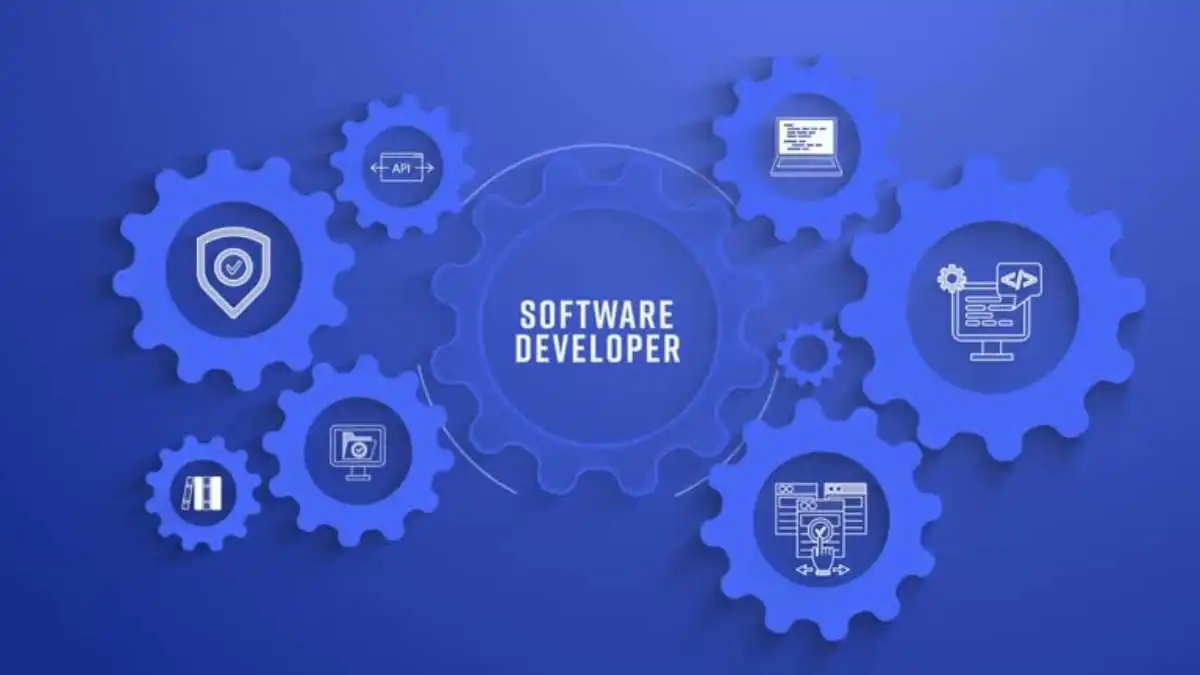Tech
How Custom Software Development Can Solve Business Scalability Issues

Introduction
The pursuit of sustainable growth presents modern enterprises with a fundamental paradox. The very systems and processes that enable initial success often become constraints that limit future expansion. This challenge becomes particularly acute when organizations attempt to scale operations beyond their original design parameters, discovering that their technological infrastructure lacks the flexibility and capacity to support ambitious growth trajectories.
Business leaders increasingly recognize that scalability represents more than simply handling increased transaction volumes or user loads. True scalability encompasses the ability to expand operations, enter new markets, adapt to changing customer requirements, and maintain competitive advantages while preserving operational efficiency and service quality. This comprehensive view of scalability demands technological solutions that can evolve alongside business strategy rather than constraining it.
Table of Contents
The Scalability Ceiling Problem
Most organizations encounter scalability constraints when their growth trajectory intersects with the limitations of their existing systems. These constraints manifest in various forms: performance degradation under increased load, inability to accommodate new business processes, integration challenges with emerging technologies, or simply the mounting costs of maintaining increasingly complex workarounds for system limitations.
The scalability ceiling problem often emerges gradually, making it difficult to identify and address before it becomes critical. Organizations may experience subtle performance issues, increasing operational complexity, or growing customer service challenges that signal approaching scalability limits. By the time these symptoms become obvious, the organization may face significant disruption to implement necessary changes.
Traditional approaches to addressing scalability constraints often involve incremental improvements to existing systems or procurement of additional software licenses and hardware capacity. While these approaches may provide temporary relief, they frequently fail to address underlying architectural limitations that will continue to constrain growth as organizations expand further.
Architectural Foundations for Growth
Custom software development provides the opportunity to design technological foundations specifically aligned with anticipated growth patterns and business requirements. Rather than adapting existing solutions to fit organizational needs, custom development enables organizations to create systems that support their unique operational models and strategic objectives from the ground up.
The architectural decisions made during custom software development have profound implications for long-term scalability. Modern software architectures emphasize modularity, microservices, and cloud-native design patterns that enable horizontal scaling and flexible resource allocation. These architectural approaches allow organizations to add capacity and functionality incrementally without fundamental system redesign.
Furthermore, custom development enables organizations to implement data architectures that support analytical requirements and business intelligence needs that emerge as organizations grow. The ability to extract actionable insights from operational data becomes increasingly critical as organizations expand, and systems designed with this capability from inception provide significant advantages over retrofitted solutions.
Strategic Alignment and Competitive Differentiation
Off-the-shelf software solutions are designed to address common requirements across broad market segments. While this approach provides cost efficiency and rapid deployment, it also means that organizations using these solutions operate with similar capabilities and constraints as their competitors. Custom software development enables organizations to implement unique processes and capabilities that create competitive differentiation.
The strategic value of custom software becomes particularly apparent when organizations operate in niche markets or have specialized requirements that generic solutions cannot address effectively. Custom development enables organizations to codify their unique expertise and operational advantages into software systems that competitors cannot easily replicate or acquire.
Additionally, custom software provides the flexibility to adapt quickly to changing market conditions or strategic priorities. Organizations with custom systems can implement new features, modify existing processes, or integrate with emerging technologies without waiting for vendor development cycles or negotiating complex customization agreements.
Economic Optimization Through Precision
While custom software development cost considerations often dominate initial discussions, the long-term economic implications of custom versus off-the-shelf solutions frequently favor custom development for organizations with significant scalability requirements. Generic solutions typically require extensive customization, integration work, and ongoing maintenance that can exceed the total cost of custom development over time.
Custom software eliminates licensing fees, reduces dependency on vendor roadmaps, and provides complete control over feature development priorities. Organizations can allocate development resources to capabilities that directly support their business objectives rather than paying for features they will never use or waiting for vendors to develop functionality they need immediately.
The economic benefits of custom software compound over time as organizations avoid the recurring costs associated with software licenses, support contracts, and integration maintenance. These savings can be substantial for organizations with large user bases or complex integration requirements that drive up licensing costs for commercial solutions.
Performance Optimization and Resource Efficiency
Custom software development enables precise optimization for specific performance requirements and usage patterns. While generic solutions must accommodate diverse operational models and performance profiles, custom solutions can be optimized for the exact conditions under which they will operate. This optimization typically results in superior performance, reduced resource consumption, and lower operational costs.
Performance optimization becomes particularly important as organizations scale because inefficiencies that are manageable at small scale can become prohibitive at large scale. Custom software enables organizations to implement algorithms, data structures, and system architectures that maximize efficiency for their specific use cases rather than accepting the compromises inherent in generic solutions.
Resource efficiency also extends to infrastructure requirements. Custom software can be designed to utilize available infrastructure more effectively, reduce data transfer requirements, and minimize computational overhead. These optimizations often result in lower infrastructure costs and improved system responsiveness that enhances user experience and operational efficiency.
Integration Capabilities and Ecosystem Development
Modern business operations require seamless integration between multiple systems, platforms, and services. Custom software development enables organizations to design integration capabilities that align with their specific technology ecosystems and operational workflows rather than being constrained by the integration options provided by commercial software vendors.
Custom integration capabilities become increasingly valuable as organizations grow and acquire new systems, enter partnerships that require data sharing, or adopt emerging technologies that may not be supported by existing software vendors. The ability to implement custom integration solutions provides operational flexibility that supports business development and strategic initiatives.
Furthermore, custom software can be designed to serve as a platform for additional development and customization by internal teams or partners. This platform approach enables organizations to build comprehensive technology ecosystems that evolve alongside their business requirements while maintaining consistency and integration across all components.
Risk Management and Business Continuity
Dependence on external software vendors creates inherent risks related to vendor stability, product discontinuation, pricing changes, and strategic shifts that may not align with customer needs. Custom software development reduces these risks by providing complete control over system evolution and maintenance.
Organizations with custom software systems can ensure business continuity regardless of changes in the broader software market. They can maintain and enhance their systems independently, modify functionality as needed, and avoid disruptions caused by vendor decisions or market consolidation that affects commercial software availability.
Risk management also encompasses security considerations. Custom software enables organizations to implement security measures tailored to their specific threat profiles and regulatory requirements rather than relying on generic security features that may not address their vulnerabilities or compliance needs.
Innovation Platform Development
Custom software systems often evolve beyond their original scope to become platforms for innovation and experimentation. Organizations can use their custom systems as testing grounds for new business models, customer engagement strategies, or operational processes without the constraints imposed by commercial software limitations.
The innovation platform capability becomes particularly valuable for organizations seeking to differentiate themselves through technological capabilities or develop new revenue streams based on their operational expertise. Custom software provides the foundation for creating intellectual property and proprietary capabilities that can become significant competitive advantages.
Moreover, custom software systems can be designed to capture and analyze operational data in ways that support continuous improvement and innovation. The insights generated through custom analytics capabilities often reveal optimization opportunities and business development possibilities that would not be apparent with generic reporting tools.
Future-Proofing and Technological Evolution
The technology landscape continues evolving rapidly, with new platforms, frameworks, and capabilities emerging regularly. Custom software development enables organizations to design systems that can adapt to technological changes without fundamental redesign or replacement.
Future-proofing requires architectural approaches that separate business logic from technology implementation, enabling organizations to adopt new technologies while preserving their investment in business-specific functionality. Custom software can be designed with this flexibility from inception, while retrofitting existing systems for technological evolution often proves complex and expensive.
The ability to evolve technologically also provides strategic advantages when new opportunities emerge. Organizations with flexible, custom systems can often capitalize on emerging technologies faster than competitors constrained by vendor development cycles or system replacement requirements.
Conclusion
Business scalability in the modern economy demands technological solutions that can evolve alongside strategic objectives and market opportunities. While off-the-shelf software may provide adequate functionality for stable operations, organizations with aggressive growth plans require systems designed specifically to support their expansion trajectory and competitive positioning. Custom software development represents a strategic investment in organizational capability that pays dividends through improved efficiency, competitive differentiation, and operational flexibility. For business leaders ready to break through scalability constraints and unlock their organization’s growth potential, partnering with Devsinc provides access to the expertise and development capabilities needed to transform scalability challenges into competitive advantages.
-

 GENERAL5 months ago
GENERAL5 months agoChristofle – For Those Who Dream of Family Heirloom Silver
-

 SPORTS7 months ago
SPORTS7 months agoDiscover the World of Football with Streameast: Watch Your Favorite Leagues and Tournaments
-

 GENERAL4 months ago
GENERAL4 months agoUncovering the World of кинокрадко: The Dark Side of Film Piracy
-

 GENERAL1 month ago
GENERAL1 month agoATFBooru: Anime, Gaming, and Subculture Imageboard


























